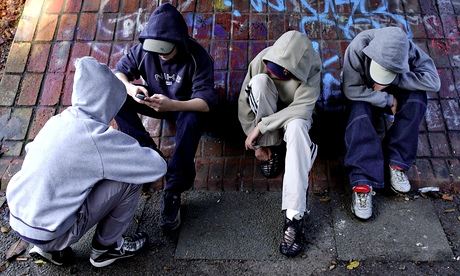
One unwanted side effect of parenting teenagers has persistently bothered me over the years, this being how it distorts one’s own perhaps halcyon view of being “teenage”. It seems that one moment you’re looking fondly back at teen times, musing misty-eyed and rosy-spectacled: “What a magical, exciting vivid stage – human fireworks exploding, personality buds blooming, life full of possibilities like never before and, indeed, never will be again.” Next thing you know, you’re the battle-scarred parent of a teen, glaring sourly at a bunch of other teenagers in the street, thinking: “I’ve got your number, you slouchy jeaned, midriff-exposing, social media-obsessed reprobates. Right now, you’re out of the house, worrying your parents sick. Then you’ll go home, and be surly and cheeky, or both, and curdle their souls all over again, because this is what ‘teenage’ is like, experienced secondhand as a modern parent – a nightmarish continuum of heartbreak, terror and mobile phone tariffs and without so much as a shred of consideration or gratitude!”
Yes, I’m being facetious, but there have definitely been times when I would have welcomed The Teenage Brain: A Neuroscientist’s Survival Guide to Raising Adolescents and Young Adults. Co-written with Amy Ellis Nutt, Dr Frances Jensen is the American author and neuroscientist of the title (“Kid’s brains are my business”). Just as importantly, Jensen steered two sons through their teenage years (not least as a single parent). Employing rigorous use of scientific data, Jensen’s central argument is that the teen brain isn’t, as she herself presumed, “an adult brain with less [sic] miles on it”. The teenage years encompass “vitally important states of brain development… full of unique vulnerabilities and exceptional strengths”.
In what amounts to a kind of parental study aid or crib sheet on teenagers, Jensen explains that teens are not an “alien species”; rather, they are a misunderstood one. While they have the same amount of hormones as young adults, they react very differently to them, making their brains capable of remarkable accomplishments, but also so open that they become at risk.
It’s all about the “white matter” being laid down, says Jensen, explaining the difference between adult and teenage brains. “If the human brain is very much a puzzle, then the teenage brain is a puzzle awaiting completion.” For teenagers, emotion triumphs over reason. Jensen counsels against allowing them to drink at home, arguing that it only makes them drink more, and outlines how much easier it is for them to get addicted to tobacco and drugs, while it is harder for them to give up.
While the plasticity of the teenage brain makes it a great time to invest in it educationally, late-developing frontal lobes lead to the infamous teenage mood swings, impulsiveness and lack of judgment. Jensen likens the teenager to a “primed and pumped” Ferrari that has yet to be road-tested – their bodies are capable of adult things before their brains are.
Elsewhere, Jensen covers topics as diverse as risk-taking, gaming, bullying and social media (“the digital invasion of the teenage brain”) to gender, stress, severe mental illness, food disorders, suicide and criminal convictions (as they relate to brain maturation).
The penultimate chapter, somewhat ominously titled “Beyond adolescence – it’s not over yet”, explains how during “post-adolescence” (another possible developmental stage), that pesky white matter continues to be laid down, leading to yet more self-absorption, anxiety and uncertainty.
Jensen concludes this interesting, accessible, well-paced book with the simple advice to keep communicating with your teenager or post-adolescent, even if you have long lost hope that anything is getting through – make that especially then. She ends with a wry reminder that whether the child is aware of it or not, the parent is their “first and most important role model”. No pressure there then.
To order The Teenage Brain for £9.99 click here

